Just over a week ago, Air New Zealand launched its much-anticipated service to New York. In the first week of operations, the route has been plagued with issues — is the airline just really unlucky, or is this route too ambitious?
In this post:
Air New Zealand faces issues on New York to to Auckland route
Air New Zealand’s Auckland to New York route covers a distance of 8,828 miles, making it the fourth longest route in the world. As is standard, the westbound flight is blocked significantly longer than the eastbound flight, given the headwinds. The flight to Auckland is blocked at 17hr35min, so this is no doubt a very long journey.

Of course the concept of New Zealand being connected directly to New York is an incredibly convenient option for those traveling between the two places. But is Air New Zealand actually able to operate this route in a reliable and economically viable way?
This flight really pushes the range of Air New Zealand’s Boeing 787-9s. As it stands, Air New Zealand is allegedly having to block 25-35 economy seats on the eastbound flight, and 55 economy seats on the westbound flight, give or take. But even that isn’t enough, allegedly.
On the September 17 inaugural flight from New York to Auckland, dozens of checked bags had to be offloaded, as the plane was further weight restricted. The airline blamed this on bad weather enroute, requiring additional fuel to be loaded.
Safety is of course the top priority, but it’s awfully frustrating if you pay extra for a nonstop flight, only to find that your bags aren’t loaded because of a weight restriction. Also, given that the flight operates just three times per week, I can’t help but wonder if passengers had to wait two or three days for their bags (so they could be loaded on the next nonstop flight), or if they were rerouted through another airport (which increases the odds of them being lost).
Then on the third-ever flight from New York to Auckland (on September 22), the airline had planned a fuel stop in Nadi, Fiji. An Air New Zealand official stated that this “short stop” in Fiji would be due to “unusually strong winds,” claiming that the winds the airline was experiencing were “stronger than 12 months of modeling and other data stretching back much further.” A refueling in Nadi will become the standard contingency plan for the airline in these situations:
“Refuelling in Nadi is our standard contingency plan for these circumstances and has also been used in previous years for other routes on our network. While these sorts of headwinds are very rare, they do happen, and we’ve planned for it.”
While all passengers had been informed of this fuel stop and those with onward connections had their flights rebooked, the service did end up operating nonstop, in a flight time of 17hr17min.
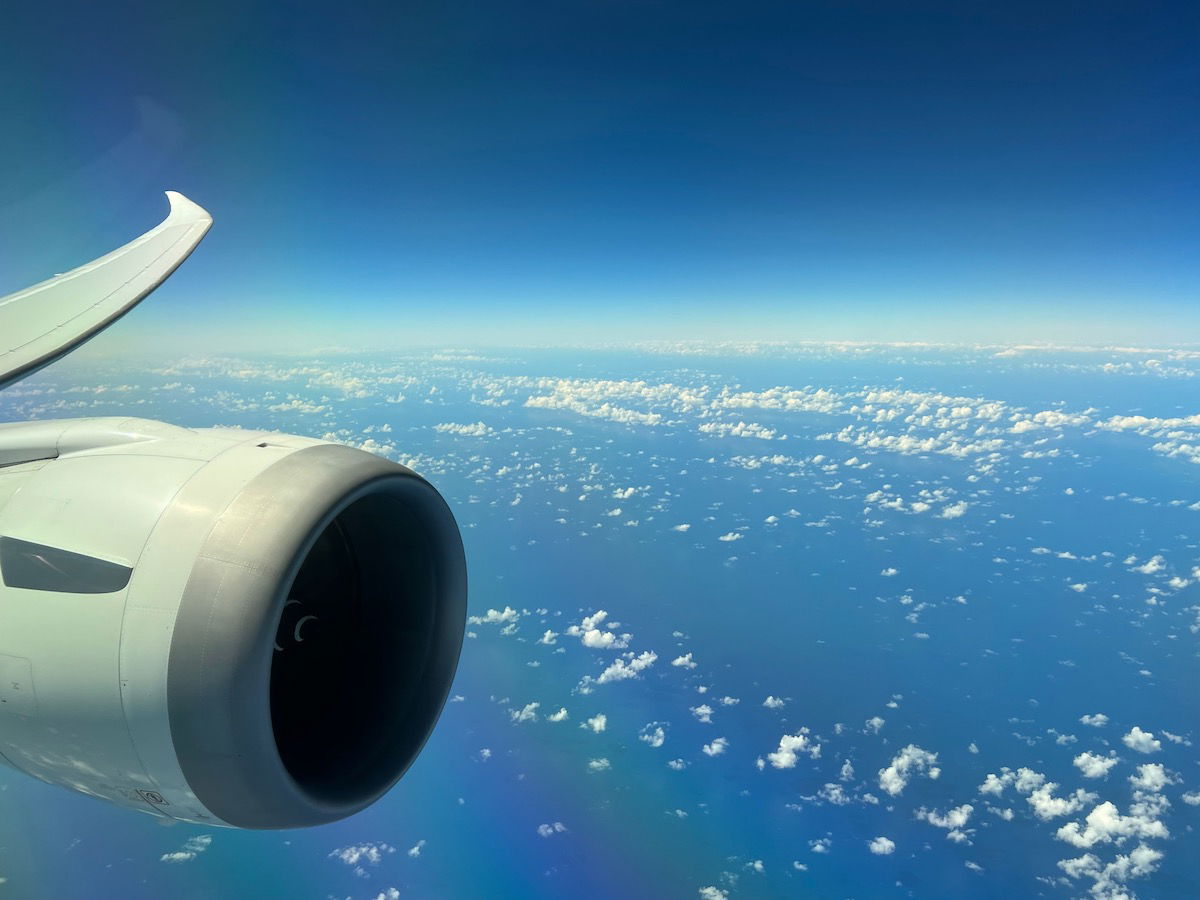
Was Air New Zealand being too optimistic?
I can’t help but wonder about Air New Zealand’s prospect of success with this route, at least under current conditions. For one, the airline is having to block a significant number of seats to operate this route, which makes the economics of a route like this even more challenging.
Then there’s the issue of managing customer expectations. Passengers aren’t going to be happy if their bags end up not making flights regularly due to weight restrictions. Similarly, a fuel stop in Nadi isn’t a huge deal, but for those with connections beyond Auckland, it could end up increasing travel time significantly.
It’s going to be interesting to see how this situation evolves. Air New Zealand claims that the wind situation right now is worse than the airline could have ever expected based on modeling. Only time will tell if that’s the truth, because then presumably these issues won’t continue. Maybe the airline just got really unlucky with the timing of launching this flight.
Admittedly this situation will at least solve itself by 2024, when Air New Zealand introduces a new business class product. The airline plans to make its Boeing 787s significantly more premium, with a lot more business class seats, which should reduce the weight of the plane overall.
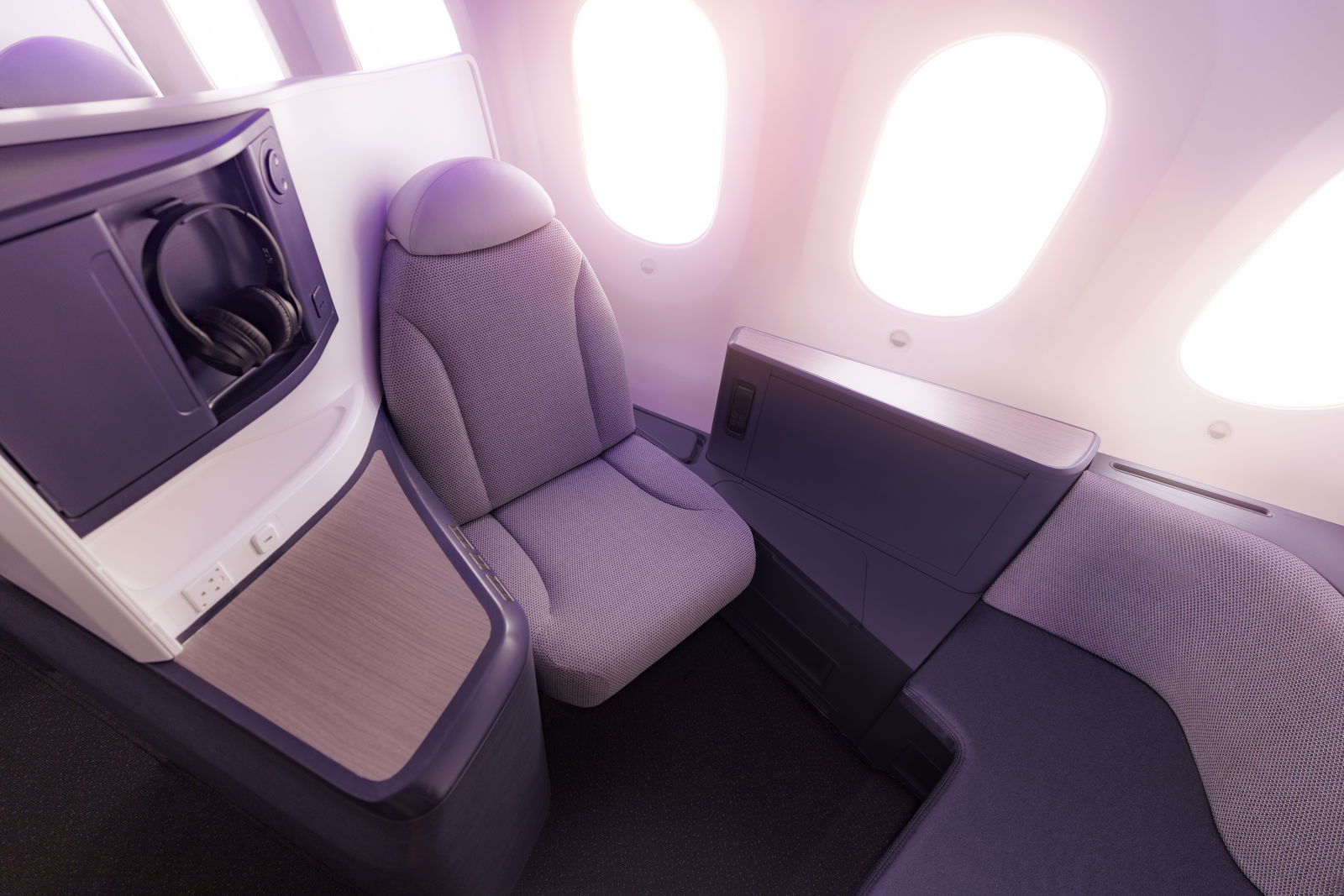
For what it’s worth, Qantas will also be launching an Auckland to New York flight as of June 2023. I imagine Qantas will have fewer issues with operational reliability, given that the carrier’s 787s are in a less dense configuration. That makes a big difference on routes like this.
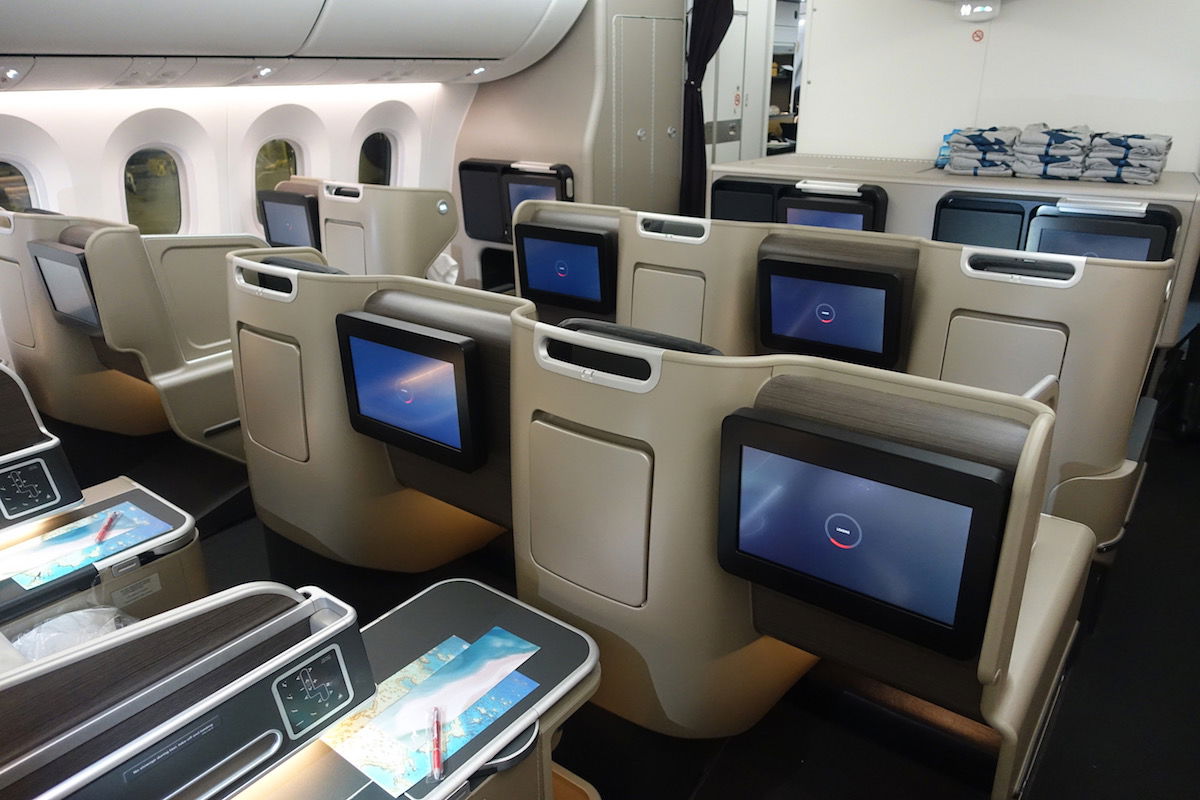
Bottom line
Air New Zealand’s first week of operations to New York haven’t exactly been smooth. In addition to the airline having to regularly block seats on the route, the first flight to Auckland had several dozen bags offloaded, while the third flight to Auckland had a fuel stop in Nadi planned (which didn’t end up being necessary at the last minute).
Air New Zealand claims the conditions have been worse than any modeling predicted, so it’ll be interesting to see how that evolves.
What do you make of Air New Zealand’s first week of New York service?
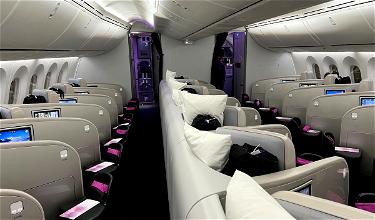


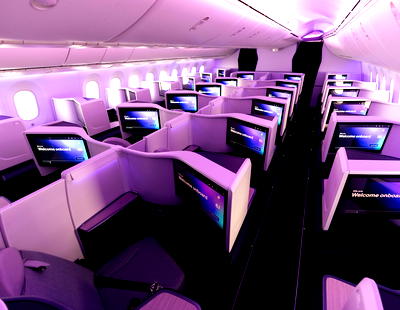
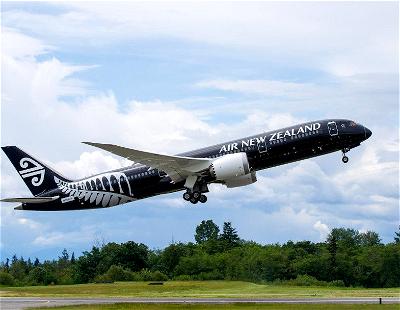
Coming from DC or other east coast cities, this flight doesn't seem worth it. If I have to do a transfer anyway, I'd rather do LAX, SFO or Houston than fly to JFK first, making no westward progress. Healthwise, it makes more sense to minimize the length of the trans-Pacific segment.
I cannot imagine flying 17+ hrs in cramped 787 economy. I flew 11 hrs ATL to IST...very uncomfortable !
As any frequent flyer knows, Southpac (South Pacific Ocean) has some of the most treacherous weather conditions for aircraft. Gigantic storms at the Equator, hurricanes/cyclones , depending on your hemisphere, makes nonstop planning tricky and not straight forward. With planned (and unplanned) deviations SAFETY is an issue here. So, as we may complain about weight restrictions, looking at the big picture it makes sense to do this. Give AZ credit for attempting something new and...
As any frequent flyer knows, Southpac (South Pacific Ocean) has some of the most treacherous weather conditions for aircraft. Gigantic storms at the Equator, hurricanes/cyclones , depending on your hemisphere, makes nonstop planning tricky and not straight forward. With planned (and unplanned) deviations SAFETY is an issue here. So, as we may complain about weight restrictions, looking at the big picture it makes sense to do this. Give AZ credit for attempting something new and the challenges that come with it.
I'm curious what the crew schedules are like for a flight like this
Why not fly somewhere else? Is flying non stop to NY really so important?
Yes. Silly, it's important. Otherwise they'd not fly the route at all.
I had the pleasure (or due to the wind not so much) of being in the first flight from JFK to Auckland. Being the first flight the staff were new from check in and the queues took a long time to check everything in as even checking things like boarding passes took way longer than usual to sort out. This meant we were delayed getting on and sat on the runway for a good 30mins...
I had the pleasure (or due to the wind not so much) of being in the first flight from JFK to Auckland. Being the first flight the staff were new from check in and the queues took a long time to check everything in as even checking things like boarding passes took way longer than usual to sort out. This meant we were delayed getting on and sat on the runway for a good 30mins which begs the question whether they were considering what to do with A bags or B the fuelling situation due to wind as they had recently come in from Houston as one of the flight attendants said. It would be disappointing if the new route was for PR purposes as passengers not getting their bags shouldn’t be a sacrifice to get to your destination. They mentioned as well about avoiding a cyclone which is why they added more fuel and thus chucking bags off, whether this was true or not I’m not sure but that might suggest this weather is temporary if this time of year is more prone to that weather in the pacific.
I would hope a relief crew is pre-positioned in Nadi to take over the flight.
Seems a rather sketchy operation at best.
is it possible to get an AKL- LAX/SFO - JFK fifth route? i thought this would be profitable, and sometimes avoided the oil/wind issue.
SFO or LAX to JFK is not a fifth-freedom route as it's domestic (origin & destination within the same country). Rather, it's subject to cabotage rules.
NZ can't sell tickets just for the domestic sector; it is even questionable as to whether they'd be able to sell stopovers on international tickets: QF didn't, on their JFK-LAX tag flights, but had traffic as they were consolidating onward traffic from 4 arriving Transpac flights (eastbound) or...
SFO or LAX to JFK is not a fifth-freedom route as it's domestic (origin & destination within the same country). Rather, it's subject to cabotage rules.
NZ can't sell tickets just for the domestic sector; it is even questionable as to whether they'd be able to sell stopovers on international tickets: QF didn't, on their JFK-LAX tag flights, but had traffic as they were consolidating onward traffic from 4 arriving Transpac flights (eastbound) or distributing onto 4 departing flights (westbound).
Seems like they need to start pushing their sky couch pretty hard on this one!
I'm 5'4" and I couldn't straighten my legs on the skycouch without my feet intruding into the aisle.
The wanted to ask why did NZ choose JFK & not EWR? It would make a lot more sense as it’s UAs very large transatlantic hub and being part of Star Alliance.
They need an A350. The 787 is a plastic toy aircraft.
Guess what? So is the A350! :o
The 787 is no more "plastic" than the a350. The A350 is larger. Both do the same job equally well.
My question about the baggage being offloaded is did they take on cargo for this flight? If so, did they prioritize the cargo over passengers bags? Probably yes to both questions.
It sounds like NZ needs to reconfigure a certain number of B789s for these ultra longhaul flights to JFK & ORD. It seems they are able to operate this flight without the restrictions but JFK & ORD are a different story. They need to follow QFs lead and offer a less dense configuration prior to receiving their next B789/781s.
"While all passengers had been informed of this fuel stop and those with onward connections had their flights rebooked, the service did end up operating nonstop, in a flight time of 17hr17min."
Whoa! Are there really passengers flying nonstop from NYC to Auckland who then have onward connections to another flight? After a flight that long, it's hard to imagine getting on another plane right away. After that 17+ hour flight landed, I would be...
"While all passengers had been informed of this fuel stop and those with onward connections had their flights rebooked, the service did end up operating nonstop, in a flight time of 17hr17min."
Whoa! Are there really passengers flying nonstop from NYC to Auckland who then have onward connections to another flight? After a flight that long, it's hard to imagine getting on another plane right away. After that 17+ hour flight landed, I would be glad just to be able to walk off the plane.
Yes, you have to remember AKL is a gateway not just to NZ but Australia as well. AKL int-int transfer is easy (just one security scan). So there will be plenty of, say MEL- AKL - JFK pax. And I can tell you, as an Australian I’d prefer that routing over MEL-LAX-JFK anyday.
Seems like first week teething ussues. With time air New Zealand should figure out how to make it work. Also- the arrival time is 8:30am not 7. Last nights departure from nyc actually arrived 20 minutes early.
As far as tech stops, those are common. I had a tech stop flying to Sydney in Nadi from Los Angeles and qantas routinely had tech stops there when they started flying to Dallas. I have tech...
Seems like first week teething ussues. With time air New Zealand should figure out how to make it work. Also- the arrival time is 8:30am not 7. Last nights departure from nyc actually arrived 20 minutes early.
As far as tech stops, those are common. I had a tech stop flying to Sydney in Nadi from Los Angeles and qantas routinely had tech stops there when they started flying to Dallas. I have tech stops all the the time flying from dca to the west coast. This summer I was on Alaska and we had to stop in Omaha to refuel on our way to Seattle. It happens and it’s not a huge deal.
Since airlines asked for and were granted exemptions to the curfew to add DCA-west coast service, it is anti-consumer to consistently being doing fuel stops rather than use a plane that can operate the flight nonstop with a high degree of certainty.
The same is also true of NE to west coast flights in the winter.
The 757 can still easily do east coast including from DCA and LGA to west coast flights....
Since airlines asked for and were granted exemptions to the curfew to add DCA-west coast service, it is anti-consumer to consistently being doing fuel stops rather than use a plane that can operate the flight nonstop with a high degree of certainty.
The same is also true of NE to west coast flights in the winter.
The 757 can still easily do east coast including from DCA and LGA to west coast flights. UA flies DCA to SFO but uses a 737-800 even though it has MAXs. Delta uses a 757 DCA to LAX as well as BOS to LAX; it used the 757 until it got its 321NEOs because those two types are the only flights that can consistenly operate year round regardless of the weather.
Fuel stops might be common but they should never be acceptable just because they airline chooses to do something that they know full well the airplane cannot do with confidence under known year round conditions.
correction... exemptions to the perimeter rule.
DL used the 757 on BOS-SFO but now uses the A321NEO
Wouldn’t it be more economical for UA to operate DCA-SFO with the B737MAX (7M8) versus the B738 (73H)? AS flies DCA-LAX with the A321NEO (21N). I wonder if AS will use the 7M8 or 7M9 for their DCA transcons. I suspect they will fly the 7M8 since the 7M9 requires a longer runway. I don’t see DL changing their LAX-DCA-LAX to the 21N since they offer DeltaOne Im this market. It will remain a B752 for the foreseeable future.
Alaska is back to using regular 738 aircraft on all of their dca transcons.
I had a tech stop on a delta 757 a few years ago on dca-lax. We had to refuel in Las Vegas. It happens to everybody.
Also it’s not “anti-consumer”. It’s not happening all the time. Just certain times. It’s sucks but that’s life. Not sure what you’re proposing with such grand pronouncements. Fact of life that happens some times.
The DOT reports the rate of diversions for domestic flights and for the month of July 2022, the most recent reported, the rate of diversion was 3.2 domestic diversions for every 1000 flights. B6, UA and AA had above average rates of diversion while WN was right at industry average and the rest of the industry was below average. B6' rate of diversion was nearly 5 in 1000 flights.
This is for all reasons...
The DOT reports the rate of diversions for domestic flights and for the month of July 2022, the most recent reported, the rate of diversion was 3.2 domestic diversions for every 1000 flights. B6, UA and AA had above average rates of diversion while WN was right at industry average and the rest of the industry was below average. B6' rate of diversion was nearly 5 in 1000 flights.
This is for all reasons but diversions do happen and there are specific flights that have higher rates of diversion if you - or I - want to dig to find them.
I’m a retired United Airlines 787 pilot. United has been routinely flying 17 1/2 flights from SFO to SIN for many years now. My personal record is 18.4 hours on that route in the winter. We had no fuel issues at all. We would routinely arrive in SIN with at least 2.5 hours of fuel remaining. This appears to me to be a weather/wind anomaly, as the aircraft is fully capable of this range.
Thank you for your explanation Mark. It does sound like this is weather related.
I allegedly have no comments.
Prime for a Cabo 5th freedom stop. I cant imagine there is ANY cargo on this if its that restricted blocking 55 seats.... of course cargo can go via LAX but just alot of cubic space wasted.
NZ obviously wanted to jump in before QF started their nonstop NYC route.
The enormous range of the A350 and B787 are truly mind-boggling but there are limits of what airframes can do. The option is to have a reduced capacity version or know in advance that there will be payload restrictions and simply not sell the last X seats until it is clear that weather will cooperate.
Both the A350 and B787...
NZ obviously wanted to jump in before QF started their nonstop NYC route.
The enormous range of the A350 and B787 are truly mind-boggling but there are limits of what airframes can do. The option is to have a reduced capacity version or know in advance that there will be payload restrictions and simply not sell the last X seats until it is clear that weather will cooperate.
Both the A350 and B787 are being enhanced to add even more range and NZ might benefit from the latest 787 version when it becomes available.
Until then, they risk damaging their brand if they don't operate the flight within the limits of the airframe. I'm betting there will be regular payload restrictions; if they can't make money at the load factor they can actually fly, the route won't last.
I’ve just about given up on NZ; they seem to be forever the copycat and less successful sibling to QF.
The rot started with them dumping LHR.
This is where A350 is superior to B787
This is incorrect. The 787’s range is superior to the 350’s, which have not achieved their range projections.
The A350 is used on more 16 plus hour flights than the B787 worldwide.
Where are you getting that from "Ram"? Totally the opposite case in the real world.
Rather than block 50 economy seats, they should be able to reasonably reconfigure these into 16 additional “Sky Couches” which are 3 economy seats in a row, with no armrests and swinging foot rests which convert to a wider-than twin (but slightly shorter) bed and a thin mattress, pillows and blankets for 30% higher cost than 1 economy seat and 35% less than premium economy. We booked one (only one available) and 1 premium economy...
Rather than block 50 economy seats, they should be able to reasonably reconfigure these into 16 additional “Sky Couches” which are 3 economy seats in a row, with no armrests and swinging foot rests which convert to a wider-than twin (but slightly shorter) bed and a thin mattress, pillows and blankets for 30% higher cost than 1 economy seat and 35% less than premium economy. We booked one (only one available) and 1 premium economy on this flight in December and will trade off for better sleep.
This makes a lot of sense and allows them to reconfigure in a way that isn't so dramatic. I also like the premium economy/business (ala Singapore) set up, particularly for such a long flight, but I think creating sky couches could probably be done more cheaply?
How big is the Auckland- New York point to point market? I am assuming that a vast majority of the traffic would be transit and this in itself throws up the viability of this route in question? I think Fiji Airlines is better placed to operate this service from its hub in Nadi.
Is it really so important not to have fuel stops? I would guess that most people object to stops because it typically entails having to change planes with all the risk that entails.
Certainly the additional hour plus to land, regular and takeoff again is important but it would also make the flight significantly cheaper as the total fuel burn is far lower.
Maybe it’s a marketing issue as selling non-stop at a premium...
Is it really so important not to have fuel stops? I would guess that most people object to stops because it typically entails having to change planes with all the risk that entails.
Certainly the additional hour plus to land, regular and takeoff again is important but it would also make the flight significantly cheaper as the total fuel burn is far lower.
Maybe it’s a marketing issue as selling non-stop at a premium is easier than trying to sell a direct flight? If direct is even the right word for a flight that has a stop but where you can stay on the plane.
@ John -- That's a great question, and something I wonder in general about these very long flights. If you ask me, the biggest consideration here is the timing of the fuel stop. The flight is scheduled to get into Auckland at around 7AM, so if the plane were to refuel in Nadi, that would be around 2-3AM, and would completely disrupt sleep. A major selling point of this flight is being able to arrive...
@ John -- That's a great question, and something I wonder in general about these very long flights. If you ask me, the biggest consideration here is the timing of the fuel stop. The flight is scheduled to get into Auckland at around 7AM, so if the plane were to refuel in Nadi, that would be around 2-3AM, and would completely disrupt sleep. A major selling point of this flight is being able to arrive in Auckland well rested, and I think almost without question, a refueling stop at that hour of the night would get in the way of that.
In terms of arriving well rested, a fuel stop on the west coast of the US would make a lot more sense. Bu then again, that would put this flight into "why bother" territory, since Air New Zealand already operates those routes.
In terms of why bother, if I fly AA to LA, I’m going to have to leave several hours for the layover in case of delays. That’s especially an issue with today’s very high load factors, staffing issues, etc.
With a West Coast fuel stop, I don’t need to worry about delays or spending several hours in the airport to leave a buffet in case they occur.
Looks like it could stop in SJD or GDL on the westbound.
Total fuel burn is lower with a stop, but you’re putting an extra cycle on the aircraft which increases maintenance costs. Plus the crew would need to be paid for the extra hour or more likely hour and a half needed for the fuel stop. Not to mention you could get into duty time and labor contract issues if the 17:35 block time increases to 19:05 hours. Or if this becomes a regular, planned thing,...
Total fuel burn is lower with a stop, but you’re putting an extra cycle on the aircraft which increases maintenance costs. Plus the crew would need to be paid for the extra hour or more likely hour and a half needed for the fuel stop. Not to mention you could get into duty time and labor contract issues if the 17:35 block time increases to 19:05 hours. Or if this becomes a regular, planned thing, you may have to do a crew change at Fiji which would increase costs massively. It’s more complicated than amateurs who don’t work in the industry appreciate.
That's why we have amateurs trying to build supersonic jets. When the people in the industry folded them decades ago.
So dumb .. I you KNOW you have to block that many seats...just make a special configuration with more spacious seats. Airline never think like humans. MBA's at a desk punching numbers...
Agree with previous post, ANZ should copy Singapore's layout of their A350-900 ULR: biz and premium econ only. Or market a 'seat next to you empty fare' in economy with an equivalent premium econ fare.
A lot of this has to do with being overly cautious in the first few weeks/months in managing the payload on routes like this, especially with ETOPS.
The same exact thing happened with AA on the DEL-JFK segment with the planned fuel stop which was often not needed and now today there are far fewer fuel stops.
Hmmm...perhaps a marketing opportunity: reconfigure ships on this route to 8-across economy (or go full Singapore with premium economy and business only).